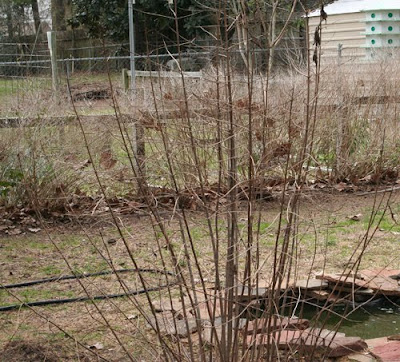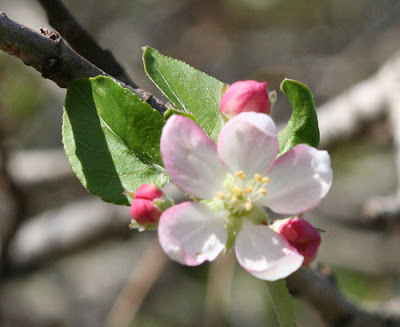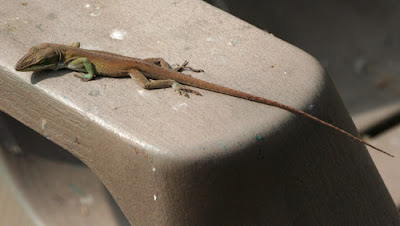"We can have flowers every month of the year." - Elizabeth Lawrence
That quote from southern gardener and garden writer Elizabeth Lawrence inspired
Carol of May Dreams Gardens to inaugurate what has become the garden bloggers' monthly rite of Bloom Day four years ago this month. Yes, Bloom Day started in deepest, darkest winter, the gardener's cry of defiance against the gloom of those days: "Yes, we
CAN have flowers every month of the year!"
Of course, that's not to say that flowers aren't a bit sparse on the ground in some months. February being one of them. I must admit that I scratched my head in puzzlement as I looked around my yard today, wondering what I could possibly show you this month.

Most of my garden looks like this just now. Fried.

Or this.
Hamelia patens asleep in the forground while
Anisacanthus wrightii dozes in back.
But there are signs of waking.

The old apple tree is stretching and opening its eyes.

The fig trees are putting out some tentative buds.

And the blueberry buds are swelling larger daily.

The goldfinches are beginning to put on their summer dress.

And the titmice are beginning to look around for a place to raise their young.
It's not as if there is no color but brown in the garden.

"Joseph's Coat" lives up to its name.

The succulents provide some rosy color, too, and if you squint and hold your head at just the right angle, it might almost look like a flower.
Meanwhile, there is one true blossom that has bloomed faithfully all winter.

The leatherleaf mahonia has been in bloom since December.

Its pretty bell-shaped blossoms open sequentially along the stems over a period of several weeks.

The bees are very grateful. There were several of them sipping from the mahonia blooms today. (Well, it's not like there is a lot to choose from in my garden right now.)
And so, I thought, that's it. That's all my "blooms" for this Bloom Day, and I turned to go inside and upload my pictures.
But as I turned, a tiny flash of blue caught my eye. I looked more closely and sure enough, there it was - a bloom!

The little trailing veronica, 'Georgia Blue Speedwell,' had opened one tiny, fragile blossom. As I looked at it, it seemed to reproach me. "Oh, ye of little faith, of course, you can have flowers every month of the year! You just have to open your eyes - and your heart - to see them."
Happy Bloom Day to all. Thank you for visiting.



































